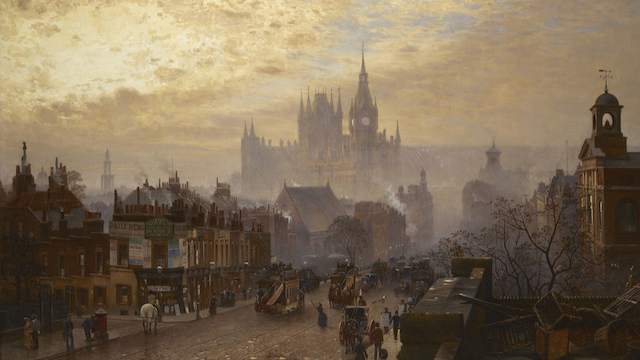Our ever-resourceful Charter Member from Dubai, Kumar Bhatia “Bobbie,” alerts us to breaking news out of the UK and Scotland:
By ANDREW ARGO, 6 February 2014 11.40am.
Dr Watson, companion of Sherlock Holmes in fiction’s most famous detective double act, was a doctor in the west end of Dundee.
The elementary and astonishing piece of evidence that Watson was based on osteopath William Smith has been discovered by city osteopath Tim Baker.
He also learned that the inspiration for the famous detective’s companion treated patients a few yards from his own surgery on Perth Road from 1910 to 1912.
Tim was attending the annual meeting of the Scottish Osteopathic Society in Aberdeen when a guest speaker related the story of William Smith — a story with some surprising twists.
Smith (1862-1912) was one of Britain’s first osteopaths. He opened a practice in Dundee in 1910 after years working in the United States but Tim knew little of his background.
Conference speaker Jason Haxton, curator of the American Museum of Osteopathy, brought various artefacts to illustrate his talk, including an article from an American newspaper written by Smith’s son Cuthbert in 1938.
In the Des Moines Sunday Register account headlined “Watson’s Son Reveals Real Sherlock Holmes,” Cuthbert Smith disclosed Holmes’ author Sir Arthur Conan Doyle modelled Dr Watson on his father, William Smith.
Doyle and William Smith were fellow medical students at Edinburgh University in the 1880s and it was their experience with Dr Joseph Bell that inspired Doyle to create Sherlock Holmes and his trusting companion.
Doyle was so impressed by Bell’s powers of deduction — an uncanny ability to diagnose patients before they would speak a word to him about their afflictions — that he used him as the inspiration for Holmes.
Dr John Watson, a Southsea doctor who served time in Manchuria and was an acquaintance of Doyle, was honoured with having Holmes’ partner named for him.
There is also evidence from A Study in Scarlet, Doyle’s first story to feature Sherlock Holmes, that Surgeon-Major Alexander Francis Preston may have been the model for Dr Watson, as their experiences from the Afghan war were similar
However, the revelation that Dr Watson was based on William Smith casts new light on the character.
Tim Baker attended the Scottish Osteopathic Society annual meeting and found a table with various curiosities brought over by Mr Haxton from the American museum.
“I glanced at the display but did not really pay heed to it,” Tim said.
“Jason Haxton had done some work on the history of osteopathy with reference to Scotland and two of the main players were William Smith and Martin Littlejohn, both Edinburgh-trained doctors who went to America and played a leading role in bringing osteopathy into the 20th Century.
“I started to pay a bit more attention as I knew that William Smith had a practice in Dundee in the early part of the century but I knew nothing else.
“Over coffee I asked Jason more questions and I realised that William Smith had been practising 50 yards from me 100 years ago.”
Tim then saw the speaker’s archive material, which contained the startling revelation in the article by Smith’s son that his father was Dr Watson.
In the Iowa state capital’s newspaper on January 16 1938, Cuthbert Smith recalled Doyle, who also became a doctor, fashioned Sherlock Holmes on Bell.
Cuthbert Smith said: “The detective’s companion Watson was my father William Smith.”
He explained how Doyle and his father marvelled at Bell’s talent presented in a daily parade of breathtaking deliberations.
One day, Doyle confided in William Smith that he was playing around with the idea of writings based on the faculties of Bell, who was approached and not only agreed but offered many helpful suggestions.
“The character of Watson was written around my father but it was merely a friendly gesture on Doyle’s part and not based on any personal merits connected with the remarkable character of the stories of Joseph,” wrote Cuthbert ?Smith.
Cuthbert Smith went on to describe when, as a pupil at Dollar and his father was in Dundee, he was taken by his father to meet Bell and Doyle in Edinburgh — a special occasion when Holmes and Watson were with their creator.


